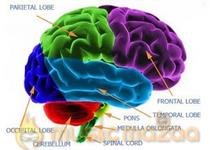ADD/ADHD is a symptomatic label thats growing in popularity in epidemic proportions. The symptoms of ADD/ADHD have their roots in both medical and developmental causes. The main stream medical solutions seem to advocate drugging the individual typically with amphetamines, and amphetamine-like drugs which paradoxically slow down the brain processes. This appears to give the person added attention span while in actuality these drugs serve only to mask symptoms without addressing or removing causes. These drugs alter the brain function with the possibility of permanent and adverse side effects that may even mimic the very symptoms the drugs were prescribed to control. These medications also put a toxic load on the body and may cause damage to vital organs.
What are the symptoms of ADD/ADHD?
*The child with ADD/ADHD who is inattentive will have 6 or more of the following symptoms:
Has difficulty following instructions
Has difficulty keeping attention on work or play activities at school and at home
Loses things needed for activities at school and at home
Appears not to listen
Doesn't pay close attention to details
Seems disorganized
Has trouble with tasks that require planning ahead
Forgets things
Is easily distracted
The child with ADHD who is hyperactive/ impulsive will have at least 6 of the following symptoms:
Fidgety
Runs or climbs inappropriately
Can't play quietly
Blurts out answers
Interrupts people
Can't stay in seat
Talks too much
Is always on the go
Has trouble waiting his or her turn
Hyperactivity
Hyperactivity is excessive physical activity often leading to inattentiveness, fidgeting and distracting behaviors. Hyperactivity is the most visible sign of ADHD. The hyperactive child is best described as "always on the go" or "motor driven." With maturation, activity levels may diminish. By adolescence and adulthood, the over-activity may appear as restless, fidgety behavior.
Symptoms of child hyperactivity are:
Often fidgets with hands or feet or squirms in seat
Often leaves seat in classroom or in other situations in which remaining seated is appropriate
Often runs about or climbs excessively in situations in which it is inappropriate
Has difficulty playing or engaging in leisure activities quietly
Often "on the go" or acts as if "driven by a motor�
Talks excessively
Impulsivity
When people think of impulsivity, they most often think about cognitive impulsivity, which is acting without thinking. The impulsivity of children with ADHD is slightly different. These children act without thinking, because they have difficulty waiting or delaying gratification. The impulsivity leads these children to speak out of turn, interrupt others, and engage in what looks like risk-taking behavior. The child may run across the street without looking or climb to the top of very tall trees. Although such behavior is risky, the child is not really a risk-taker but, rather, a child who has great difficulty controlling impulses. Often the child is surprised to discover that he or she has gotten into a dangerous situation and has no idea of how to get out of it.
Symptoms of impulsivity are:
Often blurts out answers before questions have been completed
Has difficulty awaiting turn
Often interrupts or intrudes on others (e.g., butts into conversations or games)
Engages in risk-taking behaviors
What is the real solution?
The real solution is to identify root causes of individual symptoms at their neuro-developmental, behavioral, and metabolic origins. The causes are then remediated by way of neuro-developmental therapies in conjunction with natural medical remedies and other drug free and non-invasive therapies.
Neuro-developmental causes are identified by determining the levels of development that have been missed, are underdeveloped or injured. An individualized developmental therapy program is then written that will stimulate the brain and central nervous system to a higher level of function. The caregivers are trained to implement these activities on a daily basis.
Behavioral causes are identified by examining psychological reports, patient family history, current family and school dynamics, neurological organization and academic evaluation. Various therapies are then designed to organize the brain, stabilize family and social skills and improve academic achievement. These therapies are implemented by the caregivers and can involve other family members and school teachers.
Metabolic dysfunction is identified by medical examination and various laboratory tests. Medical solutions can vary from prescribed food supplements, vitamins, natural fungicides, antibiotics, and anti-parasitics to diet changes, metal detoxing and chelating. All of these and other medical remedies are used depending upon the needs of the patient. OTHER USEFUL MODALITIES INCLUDE, BUT ARE NOT LIMITED TO; Chiropractics, Bio Cranial Therapies, Massage Therapy and Sensory Integration Techniques are a often useful modalities also.










